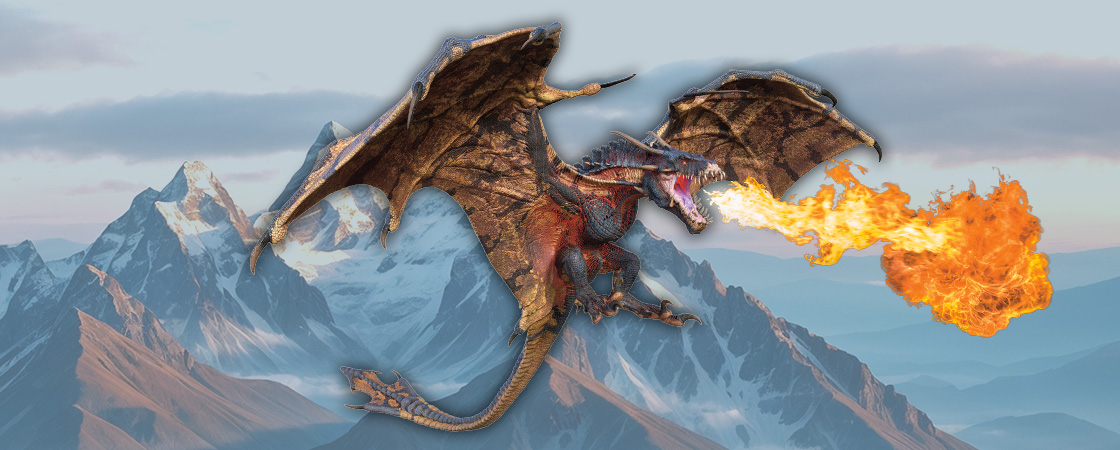It was two thousand years ago. High in the mountains of Nepal, everything stood still. A blanket of white snow covered tiny bushes on the rocks. The mountain was quiet. But that was about to change.
Suddenly, the ground began to shake. As minutes passed, the pounding became more and more violent. Rumblings louder than thunder rolled across the land. And then, with a huge CRACK, the land split open.
Thousands of feet below, a group of people looked up in terror. The mountain had started moving—and with such force! What could possibly be happening?
Some people had an answer. Stories had spread for years about terrible creatures that lived in the mountains. These creatures were enormous. Their claws made great clashing noises. And when they dug into the ground, their mighty bodies shook the earth.
Only one creature was powerful enough to move a mountain: a dragon!
It was two thousand years ago. High in the mountains of Nepal, everything stood still. There was a blanket of white snow. It covered tiny bushes on the rocks. The mountain was quiet. But that was about to change.
Suddenly, the ground began to shake. Minutes passed. The pounding became stronger and stronger. Rumblings louder than thunder rolled across the land. Then there was a huge CRACK. The land split open.
Thousands of feet below, a group of people looked up in fear. The mountain had started moving—and with such force! What could be happening?
Some people had an answer. Stories had spread for years about scary creatures that lived in the mountains. These creatures were enormous. Their claws made loud clashing noises. And when they dug into the ground, their huge bodies shook the earth.
Only one creature was powerful enough to move a mountain: a dragon!
It was two thousand years ago. High in the mountains of Nepal, everything was still. Then the ground shook. The rumbling was louder than thunder. With a huge CRACK, the land split open.
People on the ground below the mountain were afraid. The mountain was moving! But how? Some people had an answer. Stories had spread about a creature in the mountain. It was a dragon!

